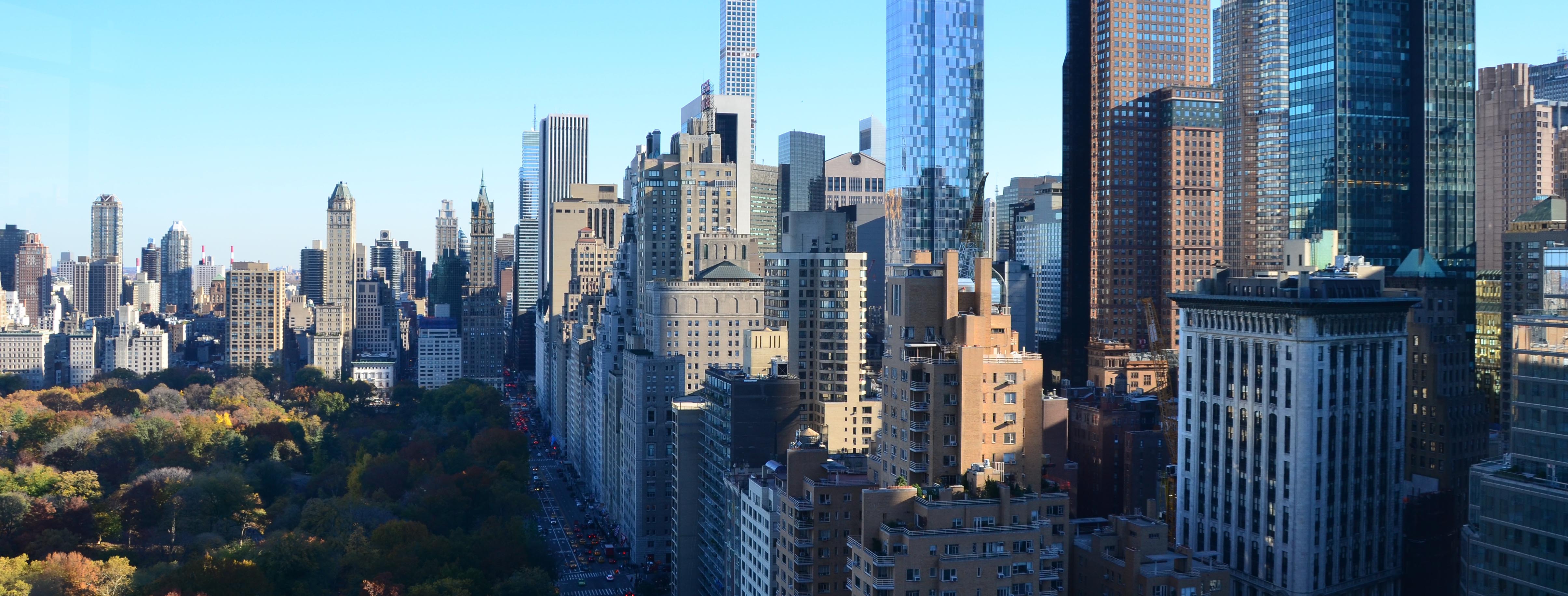The History of Manhattan Valley in the Upper West Side
The name Manhattan Valley conjures up visions of fields and farmland surrounded by hamlets and hills. And for a long time, that is what Manhattan Valley, the northern part of the Upper West Side—from 96th to 110th Streets, Central Park West to Broadway—looked like.
Much of Manhattan Valley is indeed a valley, somewhat lower than the rocky hills of Central Park. When the Dutch settled in New York in the 17th century, they called the entire western side of Manhattan Island from what is now 23rd Street up to Harlem Bloemendaal, or “Valley of Flowers.” This name was later Anglicized to Bloomingdale, and even today some people refer to Manhattan Valley and the enclave directly west of it as the Bloomingdale District.
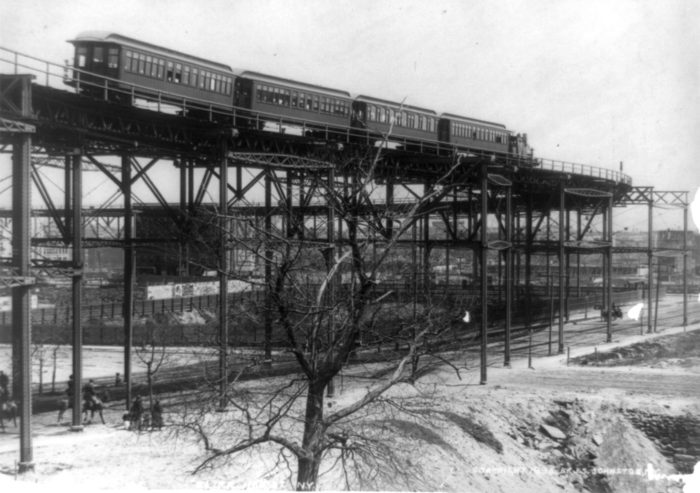
Where the Ninth Avenue El veered at 110th Street was known as Suicide Curve. Image: John C. Johnston/public domain
Even through the first half of the 19th century the area remained farmland. That is because the valley was considered remote by those living in what was the bustling hub of the city, below 23rd Street. The completion of Central Park in 1876 and the extension of the Ninth Avenue El this far north in 1879 finally led real estate developers to take an interest in the area, touting its distance from the crowds and its pristine air quality as selling points. Institutions for the elderly and the sick were the first to move uptown: The Hebrew Home for the Aged was founded on West 106th Street, between Ninth and Tenth Avenues—aka Columbus and Amsterdam Avenues—in 1881, and the Aged of the Little Sisters of the Poor opened on the same block in 1884.
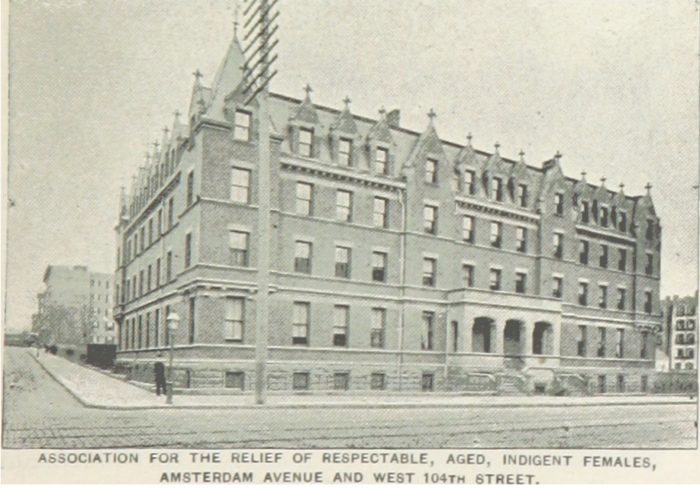
The Home for Aged Indigent Respectable Females in 1893. Image: public domain
Another institute, the Home for Aged Indigent Respectable Females (also known as the Association for the Relief of Respectable, Aged, Indigent Females) was established at Amsterdam Avenue and West 104th Street in 1881. The Victorian Gothic building was designed by Richard Morris Hunt, whose other structures included the Great Hall of the Metropolitan Museum of Art, the pedestal of the Statue of Liberty, and the Vanderbilts’ Breakers “cottage” in Newport, RI. The site of Manhattan’s largest private outdoor patio, Hunt’s building is now the HI New York City Hostel, the largest hostel (and arguably one of the more upscale) in North America.
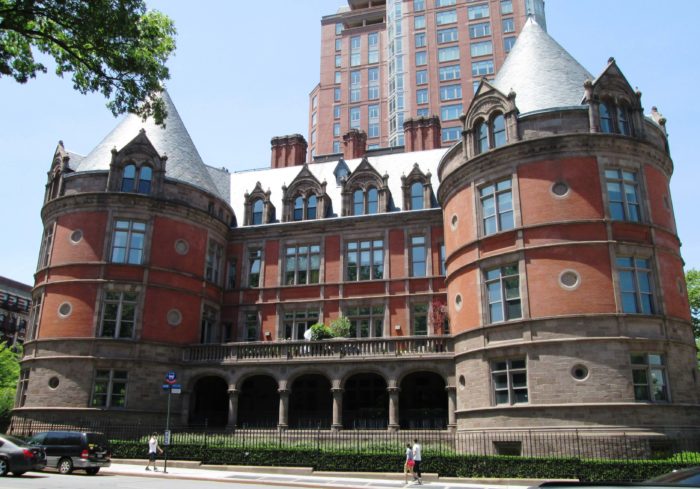
The former New York Cancer Hospital. Image: Beyond My Ken/Wikimedia
In 1887 the New York Cancer Hospital, the country’s first such specialty hospital and only the second cancer hospital in the world, opened at 455 Central Park West, between 105th and 106th Streets. John Jacob Astor III was among the leaders of the project, which was spurred in part by Civil War hero and former president Ulysses S. Grant’s diagnosis of throat cancer in 1884. The hospital moved out of its chateau-like structure in 1955 to an updated facility on the Upper East Side, becoming what is now the Memorial Sloan-Kettering Cancer Center. Today the original building is a luxury condo.
Manhattan Valley saw a construction boom in the late 1880s, as staff at these institutions, as well as at local businesses such as the Lion Brewery, between 107th and 109th Streets and Columbus and Amsterdam Avenues, sought to live nearby. The brewery, incidentally, was also where area Catholics celebrated mass before the ornate Church of the Ascension was built on West 107th Street between Amsterdam Avenue and Broadway in 1895.
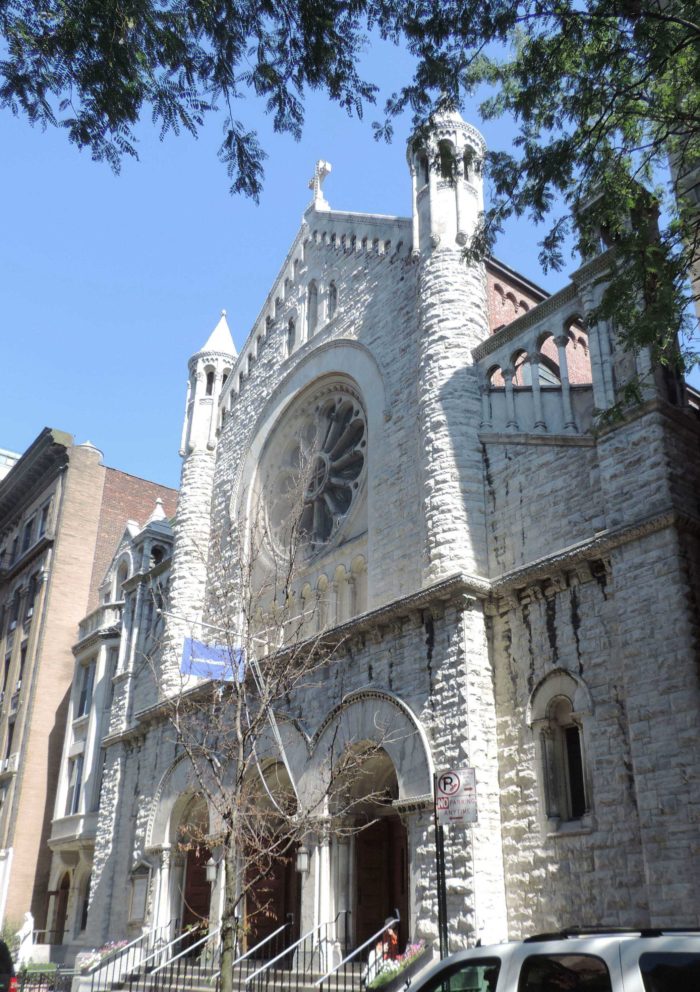
Church of the Ascension. Image: Jim.hensderson/Wikimedia
Columbia University’s relocation in 1897 from 49th Street to its current Morningside Heights campus, on the site of what had been the Bloomingdale Lunatic Asylum, brought still more residents. So did the opening of the Seventh Avenue subway in 1904, which enabled German and Irish immigrants who worked downtown to move away from the downtown tenements.
Today Manhattan Valley is a neighborhood where Whole Foods and Starbucks coexist with local institutions such as Schatzie the Butcher (established in 1911) and Absolute Bagels. And at least one former U.S. president liked the neighborhood enough to call it home: While a student at Columbia University from 1981 to ’83, Barack Obama lived on 142 West 109th Street, between Columbus and Amsterdam Avenues.


